“Greek Apricots”, interview with director Jan Krevatin
"Greek Apricots", a seemingly incompatible pair forming a bond during a night in a gas station
Listeners:
Top listeners:
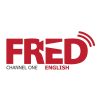 play_arrow
play_arrow
ENGLISH Channel 01 If English is your language, or a language you understand, THIS IS YOUR CHANNEL !
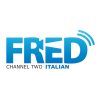 play_arrow
play_arrow
ITALIAN Channel 02 Se l’italiano è la tua lingua, o una lingua che conosci, QUESTO È IL TUO CANALE!
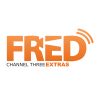 play_arrow
play_arrow
EXTRA Channel 03 FRED Film Radio channel used to broadcast press conferences, seminars, workshops, master classes, etc.
 play_arrow
play_arrow
GERMAN Channel 04 Wenn Ihre Sprache Deutsch ist, oder Sie diese Sprache verstehen, dann ist das IHR KANAL !
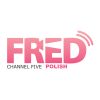 play_arrow
play_arrow
POLISH Channel 05
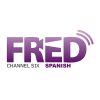 play_arrow
play_arrow
SPANISH Channel 06 Si tu idioma es el español, o es un idioma que conoces, ¡ESTE ES TU CANAL!
 play_arrow
play_arrow
FRENCH Channel 07 Si votre langue maternelle est le français, ou si vous le comprenez, VOICI VOTRE CHAINE !
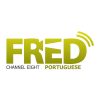 play_arrow
play_arrow
PORTUGUESE Channel 08
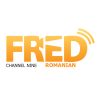 play_arrow
play_arrow
ROMANIAN Channel 09 Dacă vorbiţi sau înţelegeţi limba română, ACESTA ESTE CANALUL DUMNEAVOASTRĂ!
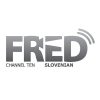 play_arrow
play_arrow
SLOVENIAN Channel 10
 play_arrow
play_arrow
ENTERTAINMENT Channel 11 FRED Film Radio Channel used to broadcast music and live shows from Film Festivals.
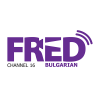 play_arrow
play_arrow
BULGARIAN Channel 16 Ако българският е вашият роден език, или го разбирате, ТОВА Е ВАШИЯТ КАНАЛ !
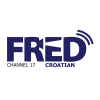 play_arrow
play_arrow
CROATIAN Channel 17 Ako je hrvatski tvoj jezik, ili ga jednostavno razumiješ, OVO JE TVOJ KANAL!
 play_arrow
play_arrow
LATVIAN Channel 18
 play_arrow
play_arrow
DANISH Channel 19
 play_arrow
play_arrow
HUNGARIAN Channel 20
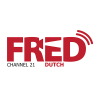 play_arrow
play_arrow
DUTCH Channel 21
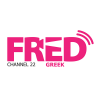 play_arrow
play_arrow
GREEK Channel 22
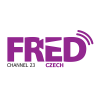 play_arrow
play_arrow
CZECH Channel 23
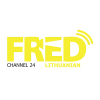 play_arrow
play_arrow
LITHUANIAN Channel 24
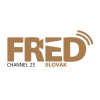 play_arrow
play_arrow
SLOVAK Channel 25
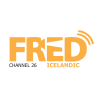 play_arrow
play_arrow
ICELANDIC Channel 26 Ef þú talar, eða skilur íslensku, er ÞETTA RÁSIN ÞÍN !
 play_arrow
play_arrow
INDUSTRY Channel 27 FRED Film Radio channel completely dedicated to industry professionals.
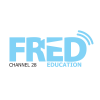 play_arrow
play_arrow
EDUCATION Channel 28 FRED Film Radio channel completely dedicated to film literacy.
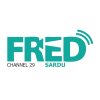 play_arrow
play_arrow
SARDU Channel 29 Si su sardu est sa limba tua, custu est su canale chi ti deghet!
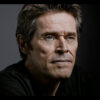 play_arrow
play_arrow
“Conversation with” at the 20th Marrakech IFF, interview with actor Willem Dafoe Bénédicte Prot
All the professionals involved in filmmaking contribute from their different departments to create a specific language: the language of film. This language borrows elements from other arts, such as literature, painting, sculpture, architecture, music and theatre. But it is also a language of its own and abides by its own rules.
As the American filmmaker Martin Scorsese points out, there are at least six elements that make up this language: words, movement, light, sound, time and the viewers’ eye.
(Scriptwriting)
Words have to do with the story and the dialogue, that is, the screenplay. There are almost as many stories as films. What they normally have in common is that in most of them, we find one or more characters who want something, who find an obstacle to achieve it and then look for a way to overcome this obstacle. This story is often told in three parts, known as three acts: the first one (called exposition), where we are introduced to the characters and the story; the second one (rising action), where the story moves forward, the characters grow and meet new obstacles; and the third one, (resolution), where the plot finds its ending, whether or not it is a happy one.
As well as story, most screenplays also have dialogue. This is an essential element in literature too, but whereas in books, writers can describe anything they want (from action to thoughts), in films, unless a voice-over narration is used, scriptwriters must find a way to show a lot of this information through the actions of the characters, not only through words. This is why most scriptwriting experts insist on a golden rule for film writing: show, don’t tell.
The opposite is known as forced exposition and is a significant problem in many films. For example, the villain speech, where the “bad guy”, who is about to kill the protagonist of the film, starts telling him the reason why he is going to kill him, or when at the beginning of a film two siblings use the word “brother” or “sister” to address each other. None of these characters are speaking in a credible manner. They are only saying what they are saying so that the viewers can learn the information they need to know in order to follow the story. A good writer or filmmaker doesn’t need to make the characters speak like this in order to convey this information. To mention a simple example: at the beginning of a film, a character rings another one and says “it’s me”, to which the first character smiles. No need in this case to mention their names.
As scriptwriters, we’re not making our characters speak in an unnatural manner and, at the same time, we’re telling the viewers that these two characters know each other well.
(Movement and light)
As well as words, a film also needs movement, light, sound, time and the viewers’ eye.
The movement is found in the actors and the camera. Acting is also a key element in the theatre, but acting for film is different. Film actors have more opportunities to get it right, since you can film several takes of the same shot. However, at the same time, a movie may capture, with a close up that doesn’t exist in theatre, every nuance of the actor’s face gestures, so more attention must be paid here.
Movement and light are also key for the camera. As David Bordwell, one of the best known film experts, explains, modern cinema is precisely characterized by the use of cameras that are constantly moving, even in relatively quiet scenes. Light can be used in many ways, for example to create a mood, like the use of shadows and darkness that was so characteristic of the expressionist films in Germany in the 30s or much more recently in many of Tim Burton’s films.
(Sound and time)
Sound in film is essential and could be used to provide us with information about the location of a scene, advance the plot, tell us about the characters in the story or heighten a mood. If the sound comes from the story of the film (dialogue, doors slamming, footsteps), it is called diegetic sound. If it comes from outside the story of the film, like the soundtrack, then it is non-diegetic sound.
Finally, time is the very element films are made of. As Russian filmmaker Andrei Tarkovsky put it, filmmaking is about sculpting in time. And this sculpting is done through editing, the ability to combine different shots into sequences, used by filmmakers to compress time and tell stories that are longer than the duration of the film. Thanks to editing, perhaps the defining element in film, films can cover a few days in the life of many characters (Crash), many years in the life of one character (Citizen Kane) or as many as 3,000 years in the lives of many creatures (The Lord of the Rings).
Indeed, filmmakers often have to think creatively about how to show the passage of time on screen. Some of the most traditional devices is to show the pages of a calendar passing by or images of the four seasons in a year. Others are more daring, like Stanley Kubrick in 2001: Space Odyssey, where a bone thrown in the air by an ape in pre-historic times is matched cut in the next shot to a similarly-shaped nuclear weapons satellite floating in space, two weapons that are separated by 4 million years and are brought together by the power of filmmaking.
As for the final element mentioned by Scorsese, the viewers’ eye, it refers to what we, as viewers, contribute to in the middle of all those cuts. When Kubrick makes us travel for 4 million years in one second by editing those two images together, what do we think? How does this affect our perception of the film? For many experts, a film is not finished until we watch it, because we provide it with the final meaning, our interpretation, which is influenced by our own personal experience. As the famous French filmmaker Jean Luc Goddard explained once, the film is not on the camera or on the screen. It is in the space between, where we (the viewers) are.
In other words, we don’t watch films as they are, but as we are.
Producing partner: University of Roehampton http://www.roehampton.ac.uk/home/
Voice Talents: Dylan Ayres, Sharon Fryer
Music: Bensound – Brazilsamba (Composed and performed by Bensound http://www.bensound.com)
Written by: fredfilmradio
Guest
Film
Festival
No related posts.
"Greek Apricots", a seemingly incompatible pair forming a bond during a night in a gas station
"Skin on Skin", the passionate and unexpected love story by Simon Schneckenburger is taking part to the 8th edition of Future Frames at KVIFF
Dissection of an incoherence in crisis, a Catalan but universal story world premiering at the 8th Future Frames at the KVIFF
Paolo Sorrentino’s “La Grazia” to open the 82nd Venice Film Festival on August 27, 2025. World premiere with Toni Servillo in competition at Biennale Cinema.


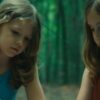
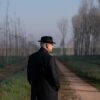

© 2023 Emerald Clear Ltd - all rights reserved.